INSTITUT SUPERIEUR D'ANTHROPOLOGIE
INSTITUTE OF ANTHROPOLOGY
ONLINE COURSES / COURS A DISTANCE
WINTER TERM : JANUARY 2014
REGISTER NOW
CHYPRE – 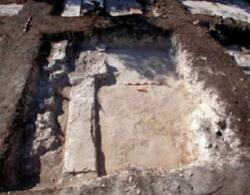
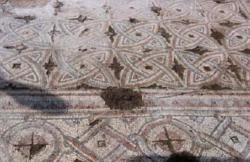 Akrotiri - The Cyprus Antiquities Department, supported by members of the Defence Archaeological Group, have been excavating a 7th century Basilica in the area of RAF Akrotiri recently.The excavation, which is now in sixth year, is a significant discovery and as experts continue to unearth more of the ancient ruin, there is enough evidence to suggest it was a building of enormous importance. The huge site, estimated to have been the size of Westminster Abbey, which the Antiquities Department dates back to approximately 616, is believed to have been a holding area for holy relics brought over from Jerusalem and boasts an incredible wealth of stunning mosaics – now protected with special gravel – marble, gold leaf trimmings, bronze and statues.And according to Eleni Procopiou, an area officer for the Antiquities Department, its discovery should not be underestimated.She gushed: “This literally helps us understand and re-write the history of the 7th century in Cyprus. We estimate that after its construction, it had a very short life-span of approximately 30 years before it was abandoned and destroyed. This was a very important place and housed the relics of some very important people. “We have made some hugely significant findings during the excavation, it is very exciting.”
Akrotiri - The Cyprus Antiquities Department, supported by members of the Defence Archaeological Group, have been excavating a 7th century Basilica in the area of RAF Akrotiri recently.The excavation, which is now in sixth year, is a significant discovery and as experts continue to unearth more of the ancient ruin, there is enough evidence to suggest it was a building of enormous importance. The huge site, estimated to have been the size of Westminster Abbey, which the Antiquities Department dates back to approximately 616, is believed to have been a holding area for holy relics brought over from Jerusalem and boasts an incredible wealth of stunning mosaics – now protected with special gravel – marble, gold leaf trimmings, bronze and statues.And according to Eleni Procopiou, an area officer for the Antiquities Department, its discovery should not be underestimated.She gushed: “This literally helps us understand and re-write the history of the 7th century in Cyprus. We estimate that after its construction, it had a very short life-span of approximately 30 years before it was abandoned and destroyed. This was a very important place and housed the relics of some very important people. “We have made some hugely significant findings during the excavation, it is very exciting.”
http://incyprus.philenews.com/en-gb/Cyprus/4170/38207/basilica-excavation
ROYAUME UNI – 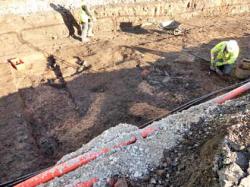 Cardiff - For the first time in 30 years, Cardiff Castle once again has an outer moat after the historic western moat known as Mill Leat was restored yesterday.The ribbon-cutting event marked the completion of a project which saw the site excavated and then re-flooded to restore the moat to its original state,The word "leat" refers to "an open watercourse conducting water to a mill". The Mill Leat sits on the same site as a former millpond at the end of the original medieval millstream. It supplied water to corn mills located to the south of the Wst Gate and contained water well into the 1970s.The work to Mill Leat began with an archaeological excavation, during which more than 3,000 individual pieces were excavated. Many of these items date from the 16th and 17th centuries – a period of Cardiff’s history of which relatively little is known.Some of the more significant pieces are clearly high status objects – including a pewter spoon and what appears to be Venetian glass – and can probably be linked to the castle’s former inhabitants.
Cardiff - For the first time in 30 years, Cardiff Castle once again has an outer moat after the historic western moat known as Mill Leat was restored yesterday.The ribbon-cutting event marked the completion of a project which saw the site excavated and then re-flooded to restore the moat to its original state,The word "leat" refers to "an open watercourse conducting water to a mill". The Mill Leat sits on the same site as a former millpond at the end of the original medieval millstream. It supplied water to corn mills located to the south of the Wst Gate and contained water well into the 1970s.The work to Mill Leat began with an archaeological excavation, during which more than 3,000 individual pieces were excavated. Many of these items date from the 16th and 17th centuries – a period of Cardiff’s history of which relatively little is known.Some of the more significant pieces are clearly high status objects – including a pewter spoon and what appears to be Venetian glass – and can probably be linked to the castle’s former inhabitants.
http://www.culture24.org.uk/history-and-heritage/archaeology/art459334
FRANCE –  Amiens - Les fouilles du chantier de la Citadelle qui vont s'étaler sur plusieurs années et sur lesquelles travaillent actuellement les archéologues de l'INRAP (Institut national de recherches archéologiques préventives). Ici, les professionnels, qui ont fouillé 7 secteurs, ont mis au jour de superbes vestiges dont une nécropole au nord de la ville antique avec 164 sépultures, dont 146 avec des restes osseux. Une étude anthropologique est actuellement en cours. « Parmi ces sépultures, figurent de nombreuses tombes d'enfants et quelques tombes hors normes comme ces trois sarcophages en plomb à couvercle décoré qui témoignent d'une certaine richesse de ces familles », ont dévoilé les archéologues. De nombreuses offrandes, céramiques complètes, verreries, cruches, fioles à parfum et des éléments de parure ont aussi été découverts.« C'est en effet un superbe chantier qui couvre toutes les époques, depuis le paléolithique jusqu'à l'époque moderne », souligne Jean-Luc Collard, conservateur régional de l'archéologie à la DRAC.
Amiens - Les fouilles du chantier de la Citadelle qui vont s'étaler sur plusieurs années et sur lesquelles travaillent actuellement les archéologues de l'INRAP (Institut national de recherches archéologiques préventives). Ici, les professionnels, qui ont fouillé 7 secteurs, ont mis au jour de superbes vestiges dont une nécropole au nord de la ville antique avec 164 sépultures, dont 146 avec des restes osseux. Une étude anthropologique est actuellement en cours. « Parmi ces sépultures, figurent de nombreuses tombes d'enfants et quelques tombes hors normes comme ces trois sarcophages en plomb à couvercle décoré qui témoignent d'une certaine richesse de ces familles », ont dévoilé les archéologues. De nombreuses offrandes, céramiques complètes, verreries, cruches, fioles à parfum et des éléments de parure ont aussi été découverts.« C'est en effet un superbe chantier qui couvre toutes les époques, depuis le paléolithique jusqu'à l'époque moderne », souligne Jean-Luc Collard, conservateur régional de l'archéologie à la DRAC.
http://www.courrier-picard.fr/region/la-citadelle-le-gros-chantier-de-l-annee-ia167b0n248287
FRANCE - La Feronnais -En 2012, le site des Bois, sur la future extension du parc Château-Gaillard, avait permis de retrouver des traces archéologiques d'occupation néolithique (3 800 av. JC). Ces trois derniers mois, une équipe de l'agence rennaise Eveha (études et valorisations archéologiques) est venue sur les terres des Landes, derrière le village la Feronnais déterrer les vestiges de la Protohistoire et de la période médiévale. Il y a trois ans en effet, des sondages menés par l'Inrap avaient détecté la présence de plusieurs zones d'occupation. Une fouille préventive avait alors été ordonnée, que la communauté de communes avait scindé en deux tranches. Les sept archéologues d'Eveha ont creusé et fouillé la terre sur 1,1 ha, depuis début septembre jusqu'à ces derniers jours. Deux périodes de l'Histoire ont été identifiées, de la fin du Néolithique au début de l'âge de Bronze (2 000-1 500 av. JC) et du Moyen-Âge (XIIe-XVe siècle).Des fragments de vaisselle et de poteries et des outils en pierre (grès, grès lustré et silex) permettront d'étudier l'évolution du site entre la fin du Néolithique et le début de l'Âge de Bronze. Des analyses de charbons, découverts dans les différents aménagements (fosses d'implantation de poteaux de charpente, fossés ou sépultures), affineront les datations de l'ensemble. La nécropole est matérialisée par plusieurs tombes, reconnaissables à leur forme, dont l'une était recouverte à l'origine de dalles de schistes. « Au moins deux d'entre elles étaient recouvertes d'un tertre de terre et de schiste (tumulus) », commente le responsable d'opération, Benjamin Leroy, à l'attention des élus conviés à visiter le site, hier. « Une occupation médiévale s'étalant entre le XIIe siècle et le XVe siècle (datation à préciser avec l'étude des fragments de vaisselle) est caractérisée par des traces d'habitats ainsi que par des vestiges en lien avec la métallurgie du fer. » Ces éléments indiquent la présence d'ateliers de réduction des minerais de fer. Des vestiges de scories de fer ont été mis au jour en grande quantité. Mais ce site, pourtant plus récent, semble moins bien conservé que les vestiges protohistoriques.
http://www.rennes.maville.com/actu/actudet_-le-site-des-landes-livre-les-secrets-de-son-histoire_fil-2437469_actu.Htm
ROYAUME UNI – 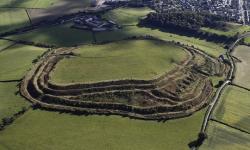 Old Oswestry - Old Oswestry is one of Europe's best preserved iron age hill forts, a site that has existed for more than 3,000 years and can be seen for miles around.Now, in what critics say is a result of the government's new planning policy, proposals have been drawn up to build almost 200 luxury homes next to the ancient site, angering local residents and heritage groups. One of 25 hill forts in Shropshire, Old Oswestry has a series of perimeter ditches, formed between ramparts, that were designed to slow down attackers. An archaeological survey in 2010 found man-made structures in fields to the north-east of the fort. Two years ago the discovery of an iron age road, thought to connect The Wrekin, near Telford, with fields near the site, indicated that there was likely to be important evidence of past cultures buried under the soil."If houses go up, access to important archaeology and further understanding of iron age culture will be lost indefinitely under bricks and concrete," said Neil Phillips of Hands Off Old Oswestry Hillfort (Hoooh). "The sprawling infrastructure of the housing masterplan, with houses, roads, gardens, link paths and car parking, will severely erode a large part of the green farmstead setting which is an integral part of Old Oswestry's appeal."
Old Oswestry - Old Oswestry is one of Europe's best preserved iron age hill forts, a site that has existed for more than 3,000 years and can be seen for miles around.Now, in what critics say is a result of the government's new planning policy, proposals have been drawn up to build almost 200 luxury homes next to the ancient site, angering local residents and heritage groups. One of 25 hill forts in Shropshire, Old Oswestry has a series of perimeter ditches, formed between ramparts, that were designed to slow down attackers. An archaeological survey in 2010 found man-made structures in fields to the north-east of the fort. Two years ago the discovery of an iron age road, thought to connect The Wrekin, near Telford, with fields near the site, indicated that there was likely to be important evidence of past cultures buried under the soil."If houses go up, access to important archaeology and further understanding of iron age culture will be lost indefinitely under bricks and concrete," said Neil Phillips of Hands Off Old Oswestry Hillfort (Hoooh). "The sprawling infrastructure of the housing masterplan, with houses, roads, gardens, link paths and car parking, will severely erode a large part of the green farmstead setting which is an integral part of Old Oswestry's appeal."
http://www.theguardian.com/science/2013/nov/24/old-oswestry-hill-fort-housing-threat
CHINE – Turpan - Chinese archaeologists have carefully stripped the 2,200-year-old clothing from four mummies in order to prevent the delicate outfits from decaying with the dried corpses. Three skulls and four mandible bones of different sizes have been uncovered so far, leading archaeologists to believe they belonged to one man, two women, and a little boy. "It may be a family buried together, including a husband and two wives with one child," Xu Dongliang with the Academia Turfanica, who joined the undressing work that began on November 20, said. Among the clothes were woollen pants, knitted mantles, fabric coats, silk scarves, and brightly-coloured sheepskin boots, which offer a glimpse into the delicate handicrafts of that time, Xu was quoted as saying by the state-run Xinhua news agency today. Inside the fabric coat, the adult male was wearing a brown and red belt made of leather and wool and decorated with green silk. The female mummies were wearing woollen coats outside with silk scarves underneath, as well as agate stones believed to be from necklaces or waist accessories. "These are proof that the family was aristocratic," said Xu. The mummies were unearthed from a cluster of ancient tombs found at a highway construction site in Turpan Prefecture in northwest China's Xinjiang Uygur Autonomous Region in 2007. About 31 tombs containing clothed mummies, a large amount of silk cloth, woollen fabric and the world's first artificial leg have so far been discovered at the site. Laboratory tests confirmed the mummies were from the Western Han Dynasty period, dating back between 2,200 and 2,500 years. Xu said the four mummified bodies were packed together over thousands of years of floods and mudslides, which made it difficult to remove their clothes. Archaeologists said, in addition to preserving the clothing, the undressing work would help them learn more through future research about the clothing of the period, spinning and dyeing techniques, the culture of Turpan and the civilisation of the ancient western regions.
http://zeenews.india.com/news/science/archaeologists-strip-mummies-to-save-ancient-clothing-in-china_892587.html
USA – Lake Michigan - Five months after divers searched a remote section of Lake Michigan for a mysterious 17th century ship and retrieved a wooden slab the group leader believes is part of the vessel, it’s still uncertain whether they are on the right track. The object of the weeklong mission in June was the Griffin, built by the legendary French explorer La Salle, which disappeared in 1679 with its six-member crew, becoming the oldest known shipwreck in the upper Great Lakes. The dive team dug a deep hole at the base of the nearly 20-foot-long timber, which was wedged vertically into the lake floor, hoping other wreckage was beneath. To their disappointment, they found nothing.
http://www.sltrib.com/sltrib/world/57176250-68/griffin-slab-libert-timber.html.csp
TURQUIE – 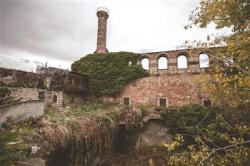 Istanbul - The Monastery of Stoudios, also known as the İmrahor Monument, will be turned into a mosque and be titled İmrahor İlyas Bey Mosque. The renovation of the mosque, which forms part of the Hagia Sophia Museum, will follow the same fate as that of Hagia Sophia churches in Trabzon and İznik, which had been already turned into mosques.The Monastery, which dates back to the fifth century, was the most important monastery of Istanbul during the Byzantine era, also serving as the center of Byzantine intelligentsia. The basilica was converted to a mosque, during the period of Ottoman Sultan Bayezid II. After two major fires in the 18th and 19th centuries, the monastery was mostly destroyed. In 1946, it was turned into a museum in line with a ministerial cabinet decision.
Istanbul - The Monastery of Stoudios, also known as the İmrahor Monument, will be turned into a mosque and be titled İmrahor İlyas Bey Mosque. The renovation of the mosque, which forms part of the Hagia Sophia Museum, will follow the same fate as that of Hagia Sophia churches in Trabzon and İznik, which had been already turned into mosques.The Monastery, which dates back to the fifth century, was the most important monastery of Istanbul during the Byzantine era, also serving as the center of Byzantine intelligentsia. The basilica was converted to a mosque, during the period of Ottoman Sultan Bayezid II. After two major fires in the 18th and 19th centuries, the monastery was mostly destroyed. In 1946, it was turned into a museum in line with a ministerial cabinet decision.
http://www.hurriyetdailynews.com/istanbul-monastery-to-become-mosque.aspx?pageID=238&nID=58526&NewsCatID=341
TURQUIE – 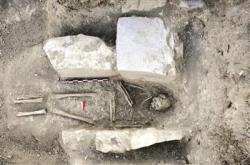 Göztepe - Human skeletons from the Byzantine era were found during excavations that have been continuing in Karabük’s Safranbolu district for two years by Karabük University Archaeology Departnment members. “We have found the oldest locals who lived in Safranbolu,” said Associate Professor Şahin Yıldırım. Excavations started in 2011 in the 17-meter-high Göztepe tumulus. Research has stopped from time to time due to seasonal factors and financial problems, but was restarted During the excavations, the skeletons of two women and two men were recently found in the tumulus, which is thought to date back to the 4th century. Yıldırım said the excavation area was a hill dating 2,500 years, adding, “We found the skeletons at the top of the hill. They were 50 meters underground. The first examinations show they belonged to two men and two women. We estimate that the grave is from the Byzantine era. These are Safranbolu’s oldest locals. The skeletons were sent to the laboratory for further examinations.” He said excavations in the tumulus had started in 2011, and continued, “Efforts have been stopped, but started again one month ago thanks to the allocation provided by the General Directorate of Cultural Beings and Museums. This is a 17-meter-high grave. And we need to go down eight-nine meters more. We hope we will get information to shed light on the history of Safranbolu.
Göztepe - Human skeletons from the Byzantine era were found during excavations that have been continuing in Karabük’s Safranbolu district for two years by Karabük University Archaeology Departnment members. “We have found the oldest locals who lived in Safranbolu,” said Associate Professor Şahin Yıldırım. Excavations started in 2011 in the 17-meter-high Göztepe tumulus. Research has stopped from time to time due to seasonal factors and financial problems, but was restarted During the excavations, the skeletons of two women and two men were recently found in the tumulus, which is thought to date back to the 4th century. Yıldırım said the excavation area was a hill dating 2,500 years, adding, “We found the skeletons at the top of the hill. They were 50 meters underground. The first examinations show they belonged to two men and two women. We estimate that the grave is from the Byzantine era. These are Safranbolu’s oldest locals. The skeletons were sent to the laboratory for further examinations.” He said excavations in the tumulus had started in 2011, and continued, “Efforts have been stopped, but started again one month ago thanks to the allocation provided by the General Directorate of Cultural Beings and Museums. This is a 17-meter-high grave. And we need to go down eight-nine meters more. We hope we will get information to shed light on the history of Safranbolu.
http://www.hurriyetdailynews.com/oldest-local-bones-found-in-safranbolu.aspx?pageID=238&nID=58486&NewsCatID=375